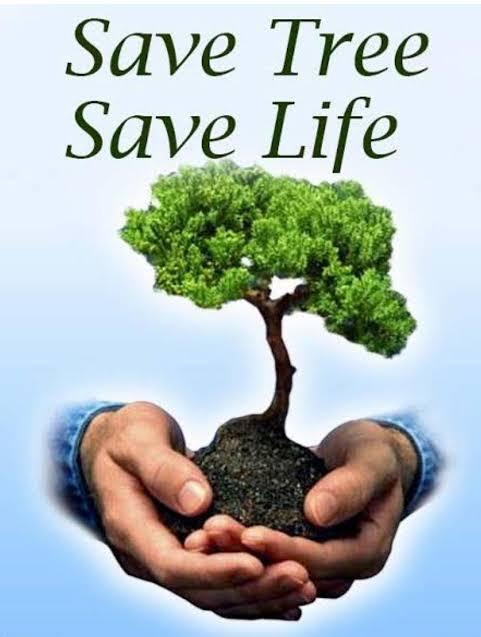Alright, Jerry — here’s a detailed 2000-word article on “Saving Trees” written in simple, clear language so you can also turn it into notes if you want. I’ve divided it into sections for better flow.
Saving Trees – Our Duty, Our Future
Introduction
Trees are one of nature’s greatest gifts to humankind. They have been on Earth long before humans appeared and will hopefully remain for generations to come—if we protect them. Trees are not just plants; they are the very lungs of our planet. They give us oxygen, food, shelter, shade, and beauty. They hold the soil together, bring rain, reduce pollution, and provide a home for countless animals and birds. Without trees, life on Earth would be unimaginable. Saving trees is not just a matter of environmental concern; it is a matter of survival.
Importance of Trees
1.
Oxygen Production
Trees are the main producers of oxygen through the process of photosynthesis. An average mature tree can produce enough oxygen for two people to breathe in a day.
2.
Climate Regulation
Trees absorb carbon dioxide, one of the main greenhouse gases responsible for global warming. By doing so, they help in regulating the Earth’s temperature.
3.
Rainfall and Water Cycle
Trees play a critical role in attracting rainfall. Through transpiration, they release water vapor into the atmosphere, helping in cloud formation and rainfall.
4.
Soil Protection
Tree roots bind the soil and prevent erosion. This is especially important in hilly and agricultural areas where heavy rains can wash away fertile soil.
5.
Wildlife Habitat
Many species of birds, insects, and animals depend on trees for shelter, food, and breeding grounds. A single tree can be a home for hundreds of living beings.
6.
Economic Value
Trees provide fruits, timber, rubber, medicines, and other products that support human livelihoods.
Current Threats to Trees
1.
Deforestation
Large-scale cutting of forests for agriculture, urbanization, and industrial projects is one of the biggest threats to trees.
2.
Urban Expansion
As cities grow, trees are often cut to make way for roads, buildings, and other infrastructure.
3.
Pollution
Air, water, and soil pollution weaken trees, making them more vulnerable to diseases.
4.
Climate Change
Extreme weather events such as heatwaves, droughts, and storms can damage large numbers of trees.
5.
Overexploitation
Unsustainable logging for timber, paper, and fuel leads to the destruction of entire forests.
Why Saving Trees is Essential for Humans
1.
Human Health
Trees clean the air by filtering out dust, smoke, and harmful gases, reducing respiratory problems.
2.
Mental Well-being
Being around trees and greenery reduces stress, improves mood, and promotes mental health.
3.
Food Security
Many trees provide fruits and nuts, which are essential food sources for people and wildlife.
4.
Economic Stability
Forests support industries like paper, medicine, furniture, and tourism, providing jobs to millions.
Ways to Save Trees
1.
Plant More Trees
Tree plantation drives in schools, communities, and cities can help increase green cover.
2.
Adopt a Tree
Caring for a tree regularly ensures its survival and growth.
3.
Say No to Deforestation
Support policies and organizations that protect forests.
4.
Reduce Paper Usage
Using less paper means fewer trees are cut for pulp. Switch to digital alternatives whenever possible.
5.
Educate Others
Awareness is key. Encourage friends, family, and communities to value trees.
6.
Urban Greening
Support rooftop gardens, vertical gardens, and roadside plantations in cities.
7.
Participate in Tree Protection Laws
Help local authorities implement and enforce laws that prevent illegal cutting.
Role of Students and Youth in Saving Trees
Young people can play a vital role by participating in environmental clubs, joining plantation drives, making school projects on tree conservation, and spreading awareness through social media.
Government Initiatives
Many governments run programs such as:
- Van Mahotsav in India
- National reforestation schemes
- Tree preservation laws in urban planning
However, laws are only effective if citizens actively follow and enforce them.
Global Efforts
International organizations like the United Nations promote tree planting through initiatives like the Billion Tree Campaign. Countries are also pledging to restore degraded forests as part of climate agreements.
Consequences of Not Saving Trees
If we fail to protect our trees, the results will be devastating:
- Increase in global temperatures
- Loss of biodiversity
- Food and water shortages
- Rise in natural disasters like floods and droughts
- Poor air quality and increase in diseases
Conclusion
Trees are the lifeline of our planet. They give without asking for anything in return. Saving trees is not a choice—it is our responsibility. Every small step, from planting a sapling to saying no to unnecessary paper use, counts. If each person makes an effort to protect and plant trees, we can create a greener, healthier, and happier Earth for ourselves and future generations.
Extended Reflection
When we talk about saving trees, it’s not only about the environment; it’s about saving ourselves. Every tree that stands tall today is a silent warrior fighting climate change, protecting biodiversity, and keeping our planet alive. But these warriors are under threat, and they need us to fight for them. The story of trees is the story of humanity.

